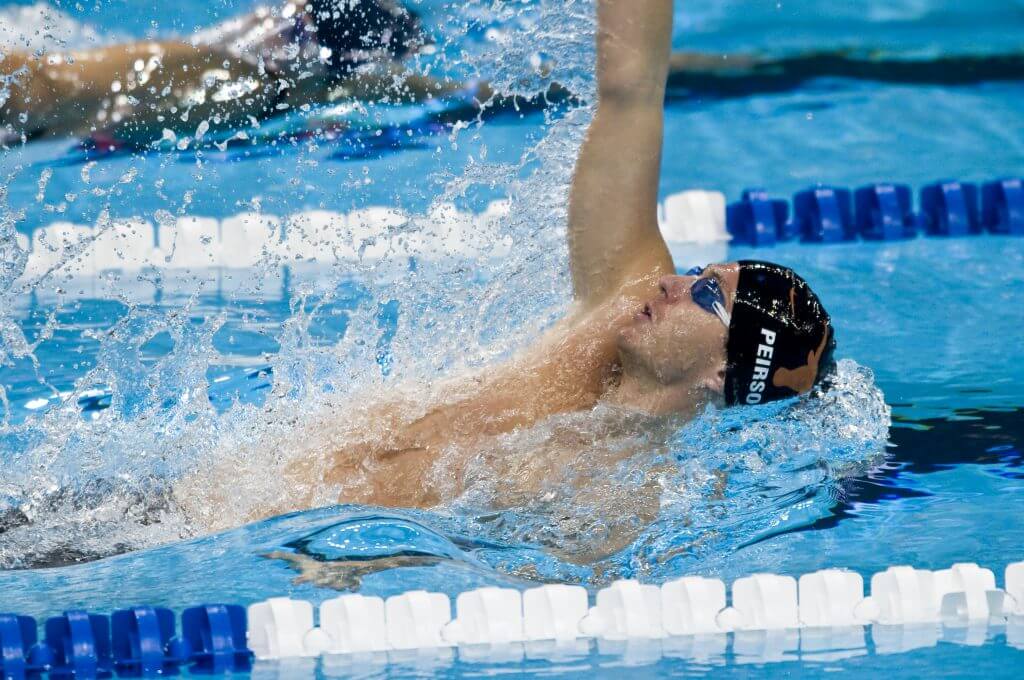Are You Kidding? The Ridiculous Finishing Speed of the All-Time Top-Two Performances in the Men’s 200 Backstroke

Are You Kidding? The Ridiculous Finishing Speed of the All-Time Top-Two Performances in the Men’s 200 Backstroke
As we await the start of the collegiate campaign and next month’s World Cup action in North America, Swimming World will run a series titled, “Are You Kidding?” This mini project of short articles is designed to highlight a development in the sport that elicited a shocking reaction.
We’re going to begin this series by looking at the top two performances of all-time in the men’s 200-meter backstroke, both registered at the 2009 World Championships in Rome. While American star Aaron Peirsol popped a world record of 1:51.92, a mark that has not been sniffed, Japan’s Ryosuke Irie secured the silver medal, thanks to an effort of 1:52.51. For reference, Ryan Lochte is the only other sub-1:53 performer in history, off a 1:52.96 clocking at the 2011 World Championships.
When assessing the marks of Peirsol and Irie, we must reference the fact that they were produced at the height of the super-suit era. At the 2009 World Champs alone, more than 40 world records were established, and we saw back-end speed in a variety of races that was beyond belief. In the final of the 200 backstroke, Peirsol and Irie closed in a manner that was head-shaking and had fans asking, “Are you kidding?”
The 100% polyurethane nature of the super suits provided athletes of the era with never-before-seen buoyancy, and swimmers maintained their form and power in the latter stages of their races. Rather than fade, the athletes continued to power through the water. We saw this scenario unfold in the final of the 200 backstroke at the 2009 World Champs, where Peirsol and Irie blew away the field.
While some athletes were elevated to a greater level by their use of the super suits, it is critical to note that Peirsol and Irie were already established as elite backstrokers. Peirsol was a multi-time Olympic champion and is in the conversation as the finest backstroker in the history of the sport, alongside East Germany’s Roland Matthes. Irie, meanwhile, was a staple on international podiums.
En route to his world record, Peirsol delivered front-half splits of 26.52 and 28.38 for a midway touch of 54.90. He then came home in 57.02 to become the event’s standard bearer. As for Irie, he was out in 55.61, but came home even faster than Peirsol, splitting a ridiculous 56.90 for his closing 100 meters.
To put the finishing speed of Peirsol and Irie into perspective, let’s take a look at how the No. 3 through No. 5 all-time performers closed out their best performances.
- On the way to the gold medal in the 200 backstroke at the 2011 World Champs in Shanghai, Lochte was out in 55.50 and came home in 57.46. Lochte was in peak form at that global competition, also winning the 200 freestyle, 200 individual medley and 400 IM. However, he was still almost a half-second slower than Peirsol from two years earlier. Irie was the silver medalist behind Lochte in 1:54.11, with his splits of 55.90 and 58.21 not coming close to his Rome marks.
- The No. 4 performer of all-time in the 200 backstroke is Australia’s Mitch Larkin, who went 1:53.17 in 2015 World Cup competition. Larkin went 55.16 for the front half of his race, not far off the times of Peirsol and Irie. But Larkin split 58.01 over the last two laps, proof that the super suits provided a unique advantage.
- Sitting in the No. 5 slot historically is Hungarian Hubert Kos, who won the world title this summer with a spectacular European record of 1:53.19. Kos pushed the pace during the opening 100 meters, splitting 54.64 at the midway point. Over the last 100 meters, Kos was timed in 58.55.
The way Peirsol and Irie wrapped up their performances in Rome signified the immense impact of the super suits. And compared to what we have seen since, they undoubtedly provided Are You Kidding moments.



